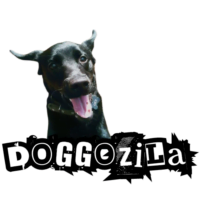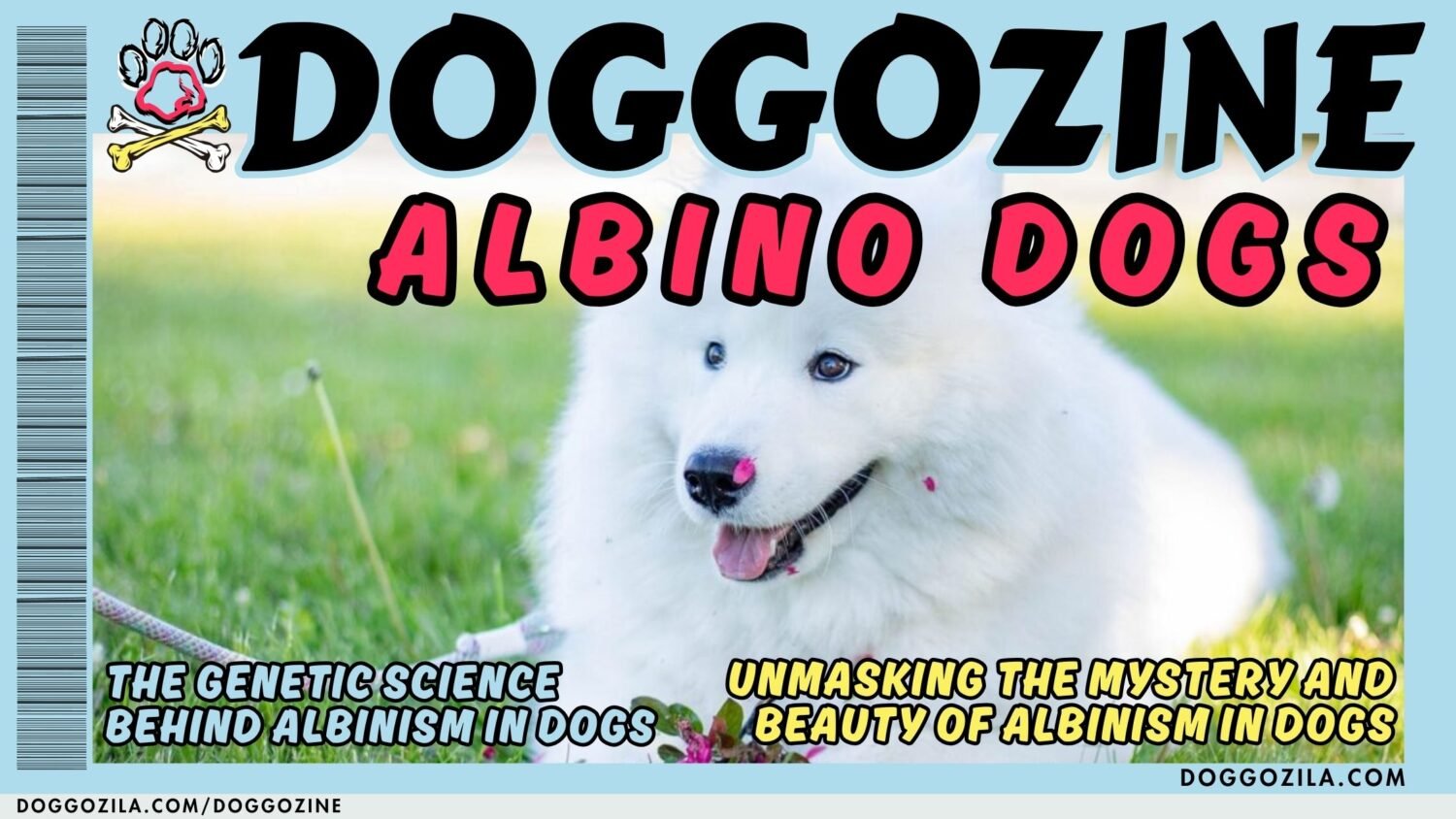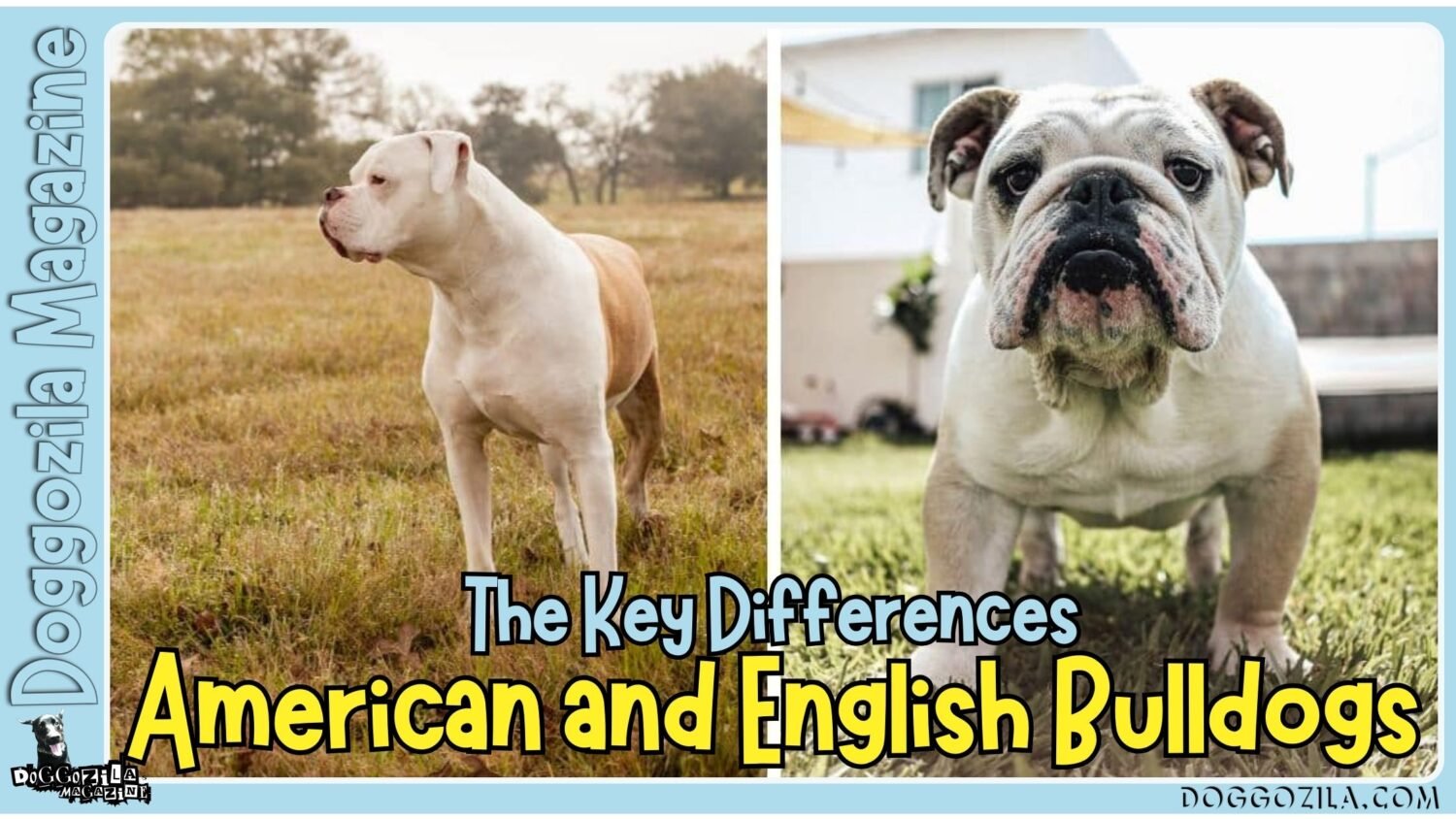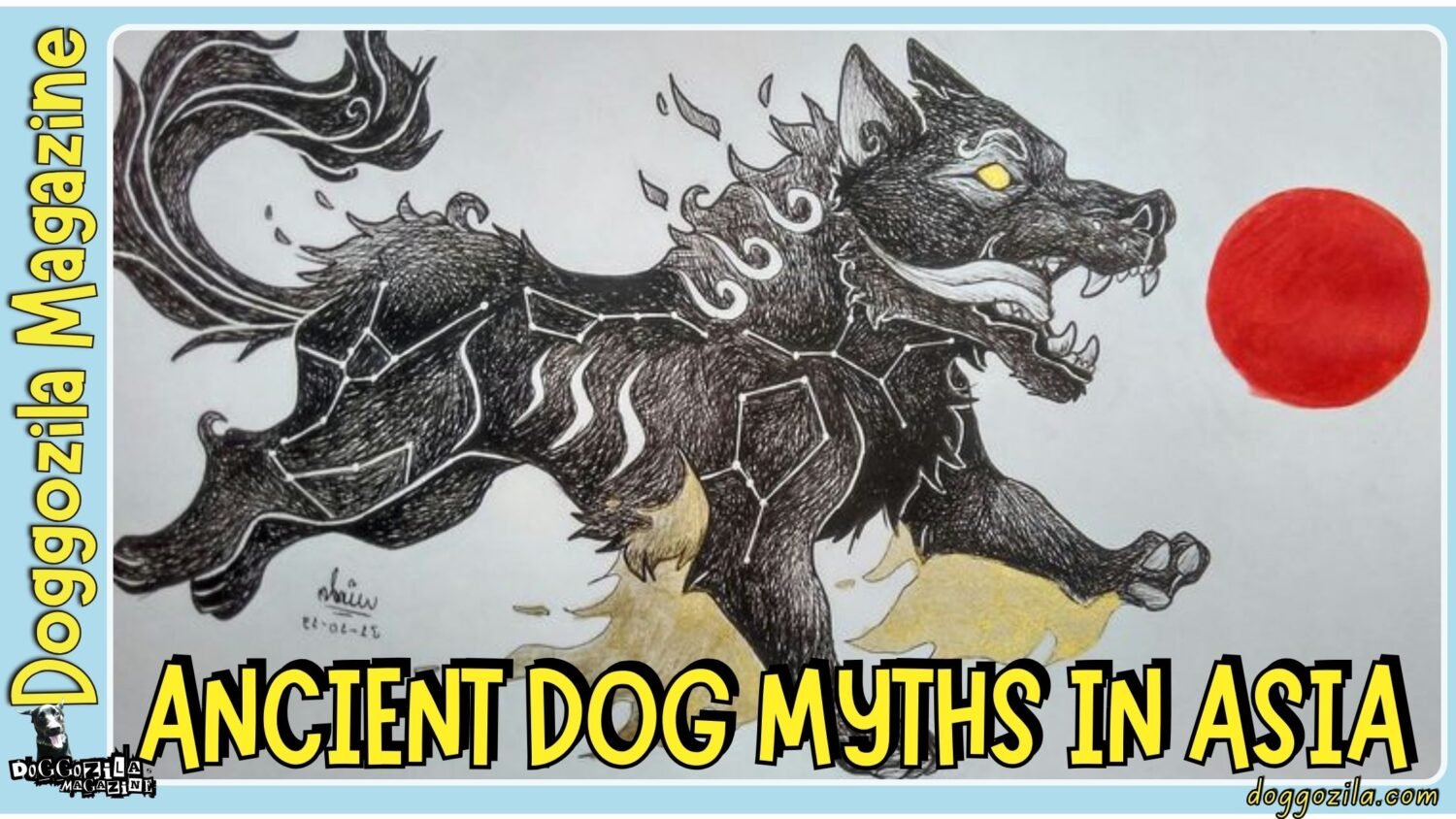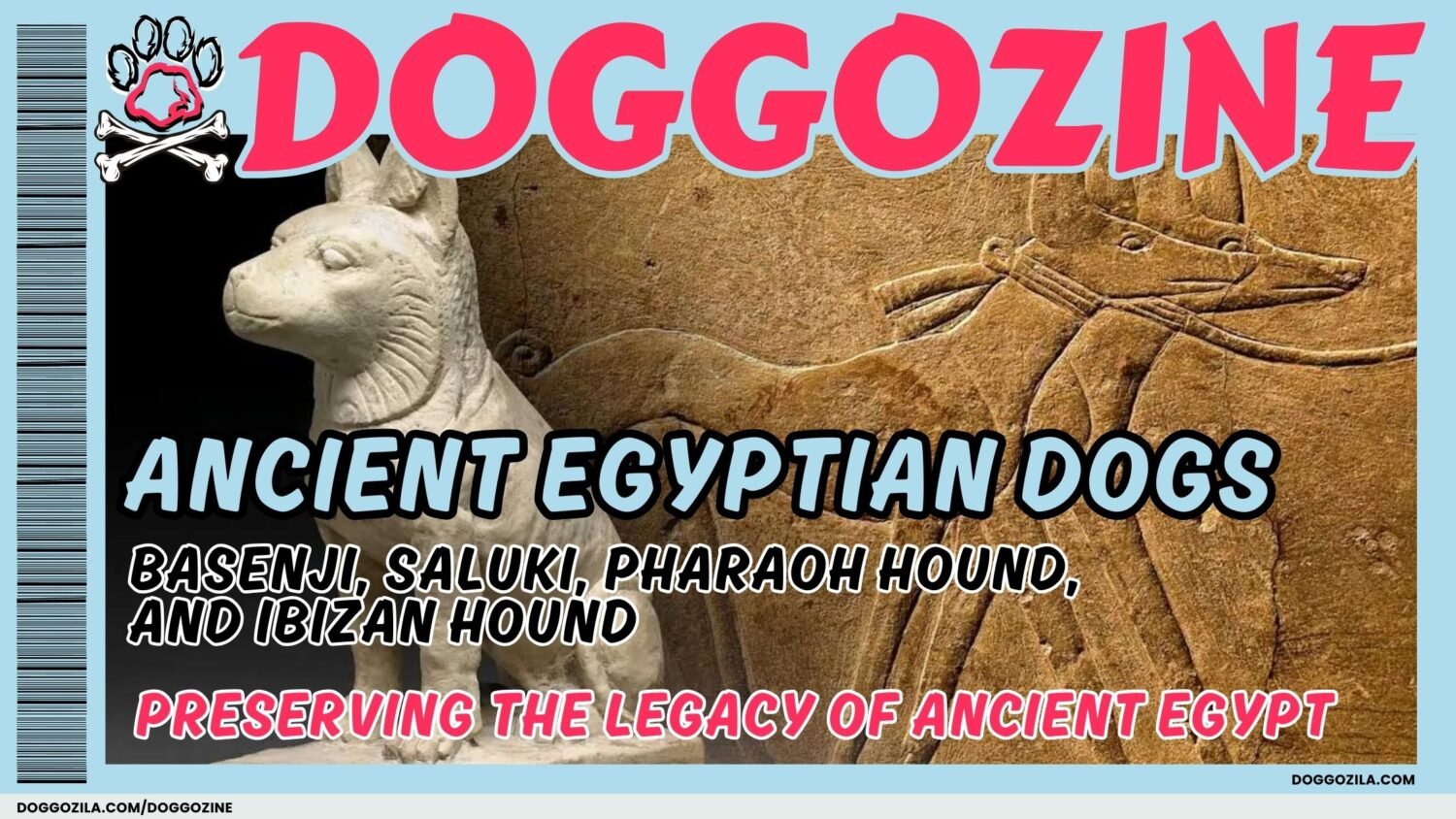Brachycephalic dogs are a specific group of breeds characterized by their short and broad skulls, which result in a flat-faced appearance. The term “brachycephalic” is derived from the Greek words “brachy,” meaning short, and “cephalic,” referring to the head. These dogs typically exhibit a range of physical traits, including a shortened muzzle, wide-set eyes, and an overall compact body structure.
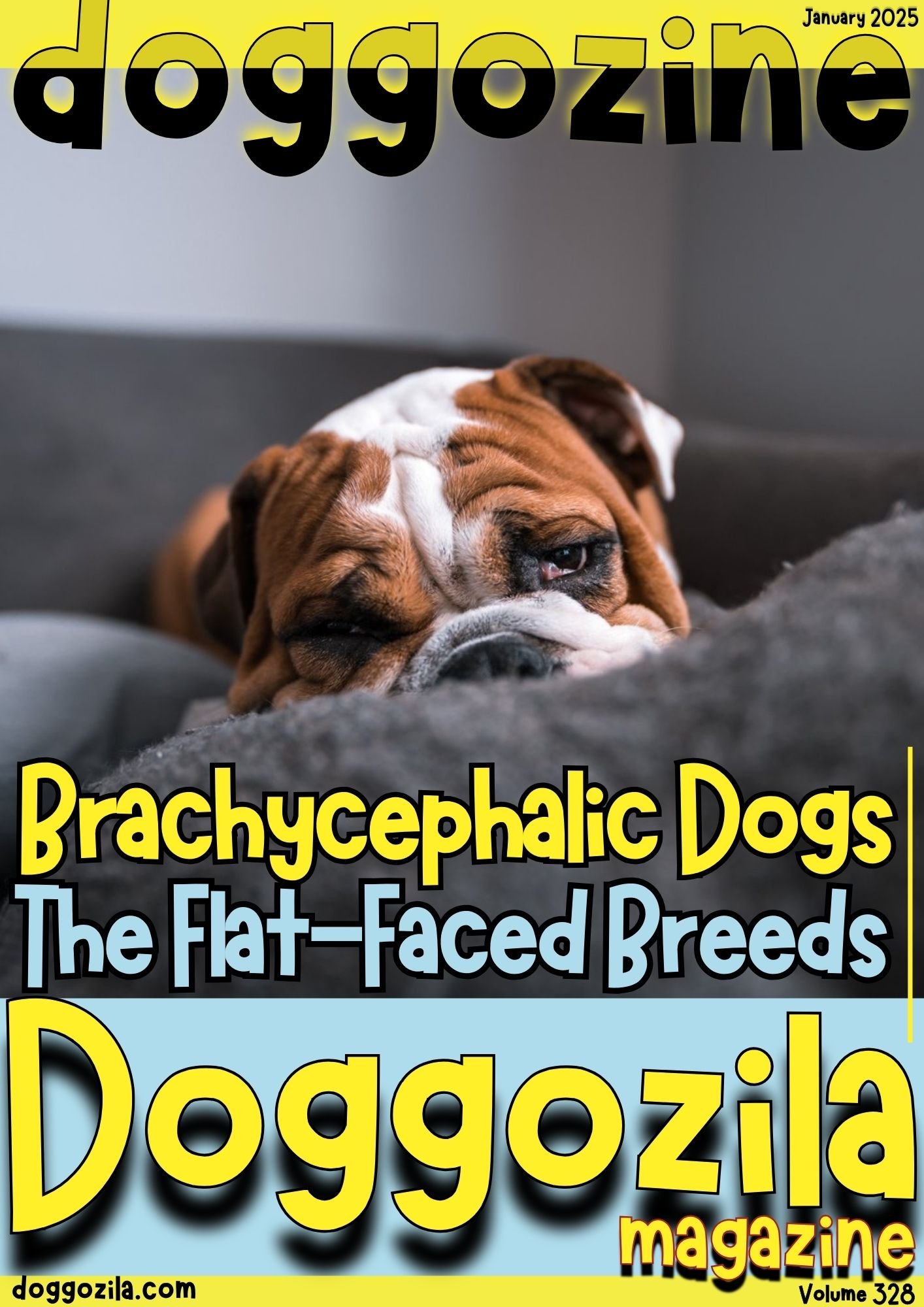
BREEDS THAT REPRESENT THE BRACHYCEPHALIC DOGS
Common examples of brachycephalic breeds include Pugs, French Bulldogs, Bulldogs, Boston Terriers, Shih Tzus, Pekingeses, Affenpinschers, Lhasa Apsos, Griffon Bruxellois and Cavalier King Charles Spaniels.
Brachycephalic Dogs Are Social Chameleons
One of the most notable behavioral traits of brachycephalic dogs is their sociability. They are often described as affectionate and eager to be around humans, making them popular companions. However, their unique physical characteristics can also influence their behavior.
„ For instance, many brachycephalic breeds tend to have lower energy levels and may prefer lounging over extensive exercise. This preference can sometimes lead to obesity, which exacerbates existing health issues linked to their facial structure. “
Genetic Predisposition for Potential Health Complications
The flat-faced appearance of these breeds is primarily due to selective breeding practices that have favored such traits for aesthetic purposes. This genetic predisposition results in their distinctive features but also introduces potential health complications.
Many brachycephalic dogs experience respiratory issues due to their constricted airways, a condition commonly referred to as brachycephalic obstructive airway syndrome (BOAS). Other health concerns include dental problems, overheating, and eye disorders, all of which require special attention in their care.
In summary, understanding what brachycephalic dogs are encompasses an appreciation of their unique anatomy, behavior, and the health challenges they face. Their distinct facial structure offers both charm and responsibility for potential dog owners, necessitating a commitment to their specialized needs.
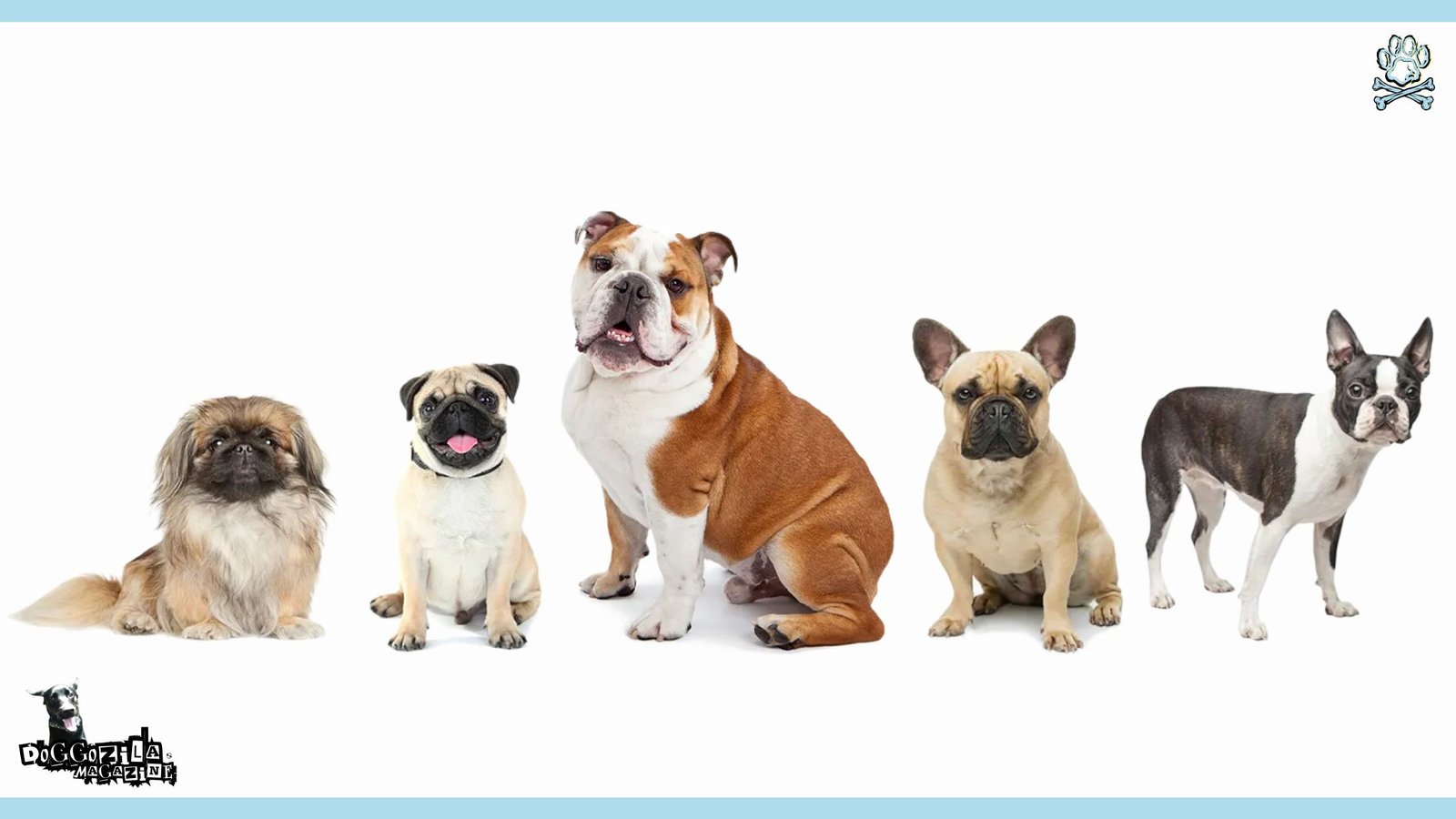
MOST POPULAR BRACHYCEPHALIC DOGS
Brachycephalic dogs, characterized by their unique flat faces, have gained significant popularity in recently.
The Pug
Among these breeds, the Pug has established itself as a beloved companion. Originating from China, Pugs were favored by royalty and are known for their affectionate nature, charming personality, and distinct wrinkled features. Their playful demeanor and adaptability to various living conditions have made them a staple in many households.
French Bulldog
The French Bulldog is another favorite among dog enthusiasts. This breed, which traces its roots back to England, has garnered attention due to its small size, large bat-like ears, and easy-going temperament.
French Bulldogs are known for their social nature and make excellent companions, often forming strong bonds with their families. Their unique look and friendly disposition contribute to their growing popularity in urban settings, where their manageable size is an added advantage.
Boston Terriers
Boston Terriers, sometimes referred to as the “American Gentleman,” are celebrated for their tuxedo-like coat and lively personality. This breed originated in the United States and has a friendly, energetic demeanor that appeals to a wide range of dog owners.
Boston Terriers are intelligent and often easy to train, making them ideal for families and first-time dog owners alike. Their adaptability and playful spirit further enhance their appeal in various living environments.
English Bulldog
Lastly, the English Bulldog, with its distinctive wrinkled face and stocky build, has captured the hearts of many. Historically, this breed was used for bull-baiting before becoming a loyal family pet.
English Bulldogs are known for their gentle nature and protective instinct, making them well-suited as companions and family guardians.
Despite their sometimes gruff appearance, they are incredibly affectionate and require moderate exercise, making them a popular choice for those seeking a loving, low-maintenance dog.
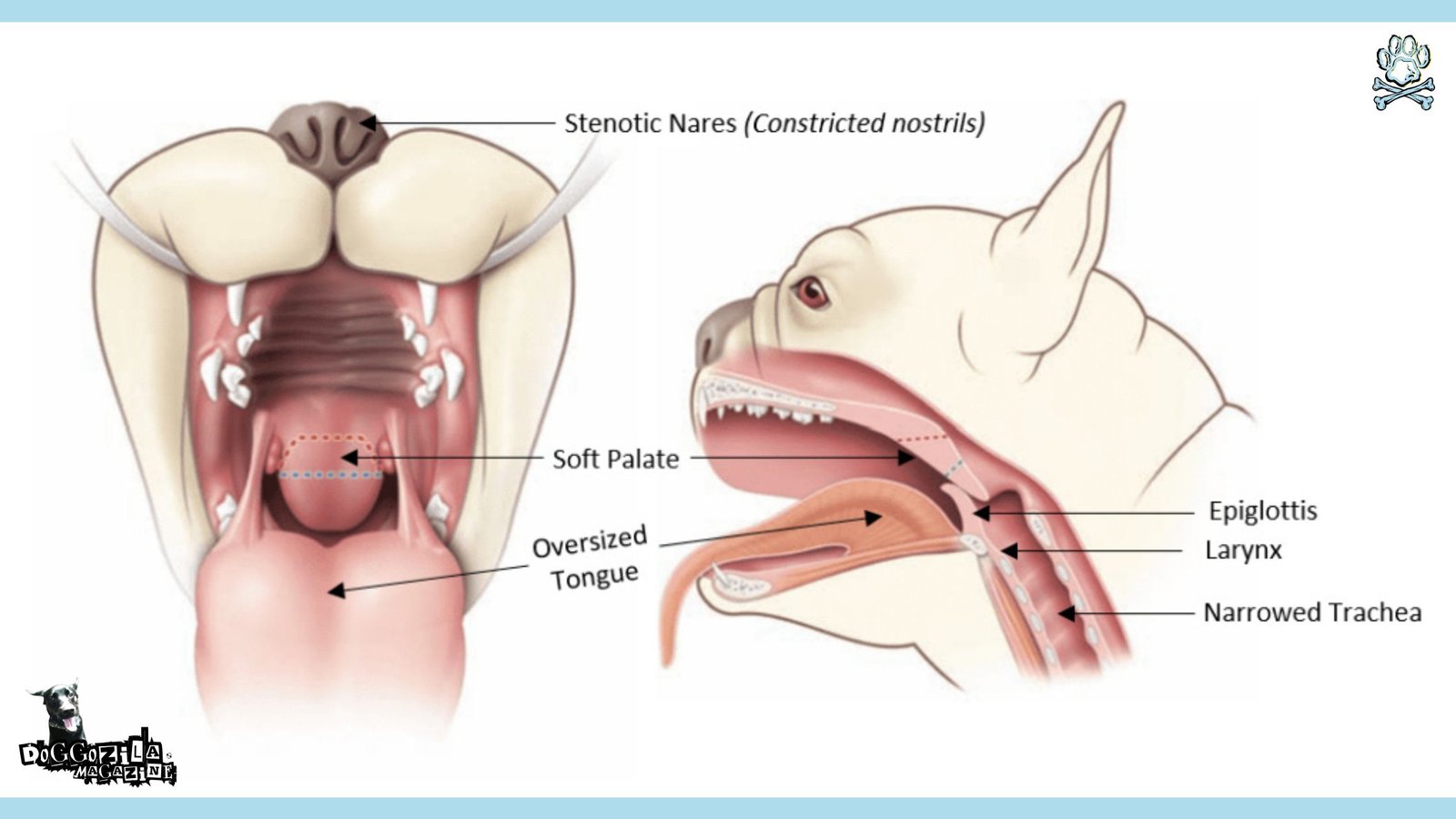
HEALTH CONCERNS RELATED TO BRACHYCEPHALIC DOGS FEATURES
Brachycephalic dogs, characterized by their short, flat faces, face a range of health concerns.
Brachycephalic Obstructive Airway Syndrome (BOAS)
One of the most prevalent issues in these breeds is known as Brachycephalic Obstructive Airway Syndrome (BOAS), a condition that arises from the structural abnormalities in their airways.
The shortened skull shape results in an elongated soft palate, narrow nostrils, and hypoplastic trachea, all of which contribute to significant respiratory difficulties.
Dogs suffering from BOAS often exhibit a variety of symptoms including labored breathing, snoring, snorting, and exercise intolerance. In more severe cases, owners may notice gagging or blue-tinged gums, indicating a concerning lack of oxygen.
Routine Symptoms to Watch For
These symptoms can make routine activities, like playing or even walking, taxing for brachycephalic breeds, significantly affecting their quality of life. The susceptibility of these dogs to heat exhaustion is another pressing concern. Their compromised respiratory systems struggle to regulate body temperature effectively, especially in warm or humid conditions.
This makes attentive monitoring during hot weather essential to prevent serious heat-related complications. Owners should be aware that stress and over-exertion can further exacerbate respiratory problems, necessitating a careful balance between exercise and rest.
Dental Issues and Eye Problems
Additionally, brachycephalic breeds may encounter dental issues and eye problems. Crowded teeth and inadequate airflow can lead to periodontal disease, while the bulging eyes typical in these breeds can predispose them to conditions like corneal ulcers.
It is, therefore, crucial for owners of brachycephalic dogs to maintain regular veterinary check-ups to monitor for these health concerns. Vigilance regarding their health can result in early detection and management of potential complications, ultimately enhancing the welfare and life quality of these unique pets.
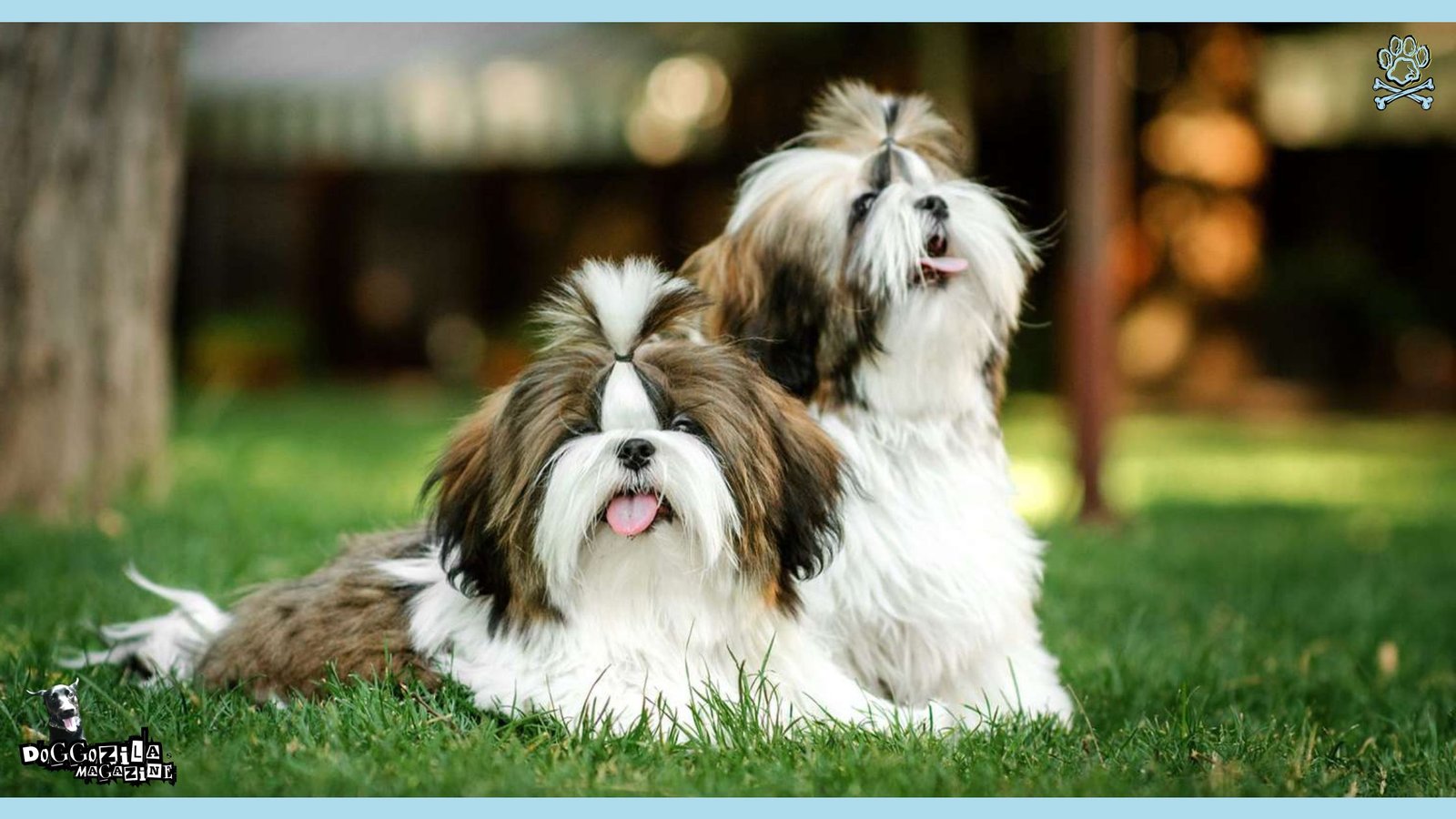
UNDERSTANDING BRACHYCEPHALIC NOISES: WHEN TO WORRY
Brachycephalic dogs are known for their distinctive flat faces, which can contribute to various respiratory issues due to their anatomical structure. These breeds often produce a range of sounds while breathing, including snorting, grunting, and wheezing. It is essential for dog owners to interpret these noises correctly to ensure the well-being of their pets.
Monitor the Dog Snorting
Snorting is relatively common among brachycephalic dogs and typically occurs when they are excited, playing, or engaging in physical activity. This sound is often a result of the restricted airflow associated with their short nasal passages.
In general, if the snorting is occasional and not accompanied by any distress, it is considered normal behavior. However, persistent or intensifying snorting could indicate that the dog is struggling to breathe, necessitating immediate veterinary attention.
Watch for the Dog Grunting
Grunting, often associated with effort or discomfort, can occur when a dog is adjusting its position or attempting to communicate.
While this sound may not always be alarming, it can also signal respiratory distress, especially if it becomes more frequent during rest or is accompanied by other signs of distress, such as lethargy or panting.
Monitoring the context and frequency of grunting is vital for understanding your dog’s health status.
The Dog Wheezing Could be a Concerning
Wheezing, on the other hand, is a more concerning sound that generally indicates an obstruction in the airways or excessive respiratory strain.
If your brachycephalic dog begins to wheeze, it may struggle to get enough air, thereby requiring immediate veterinary evaluation.
Recognizing these critical differences in sound is key to ensuring appropriate responses to potential health challenges faced by brachycephalic breeds.
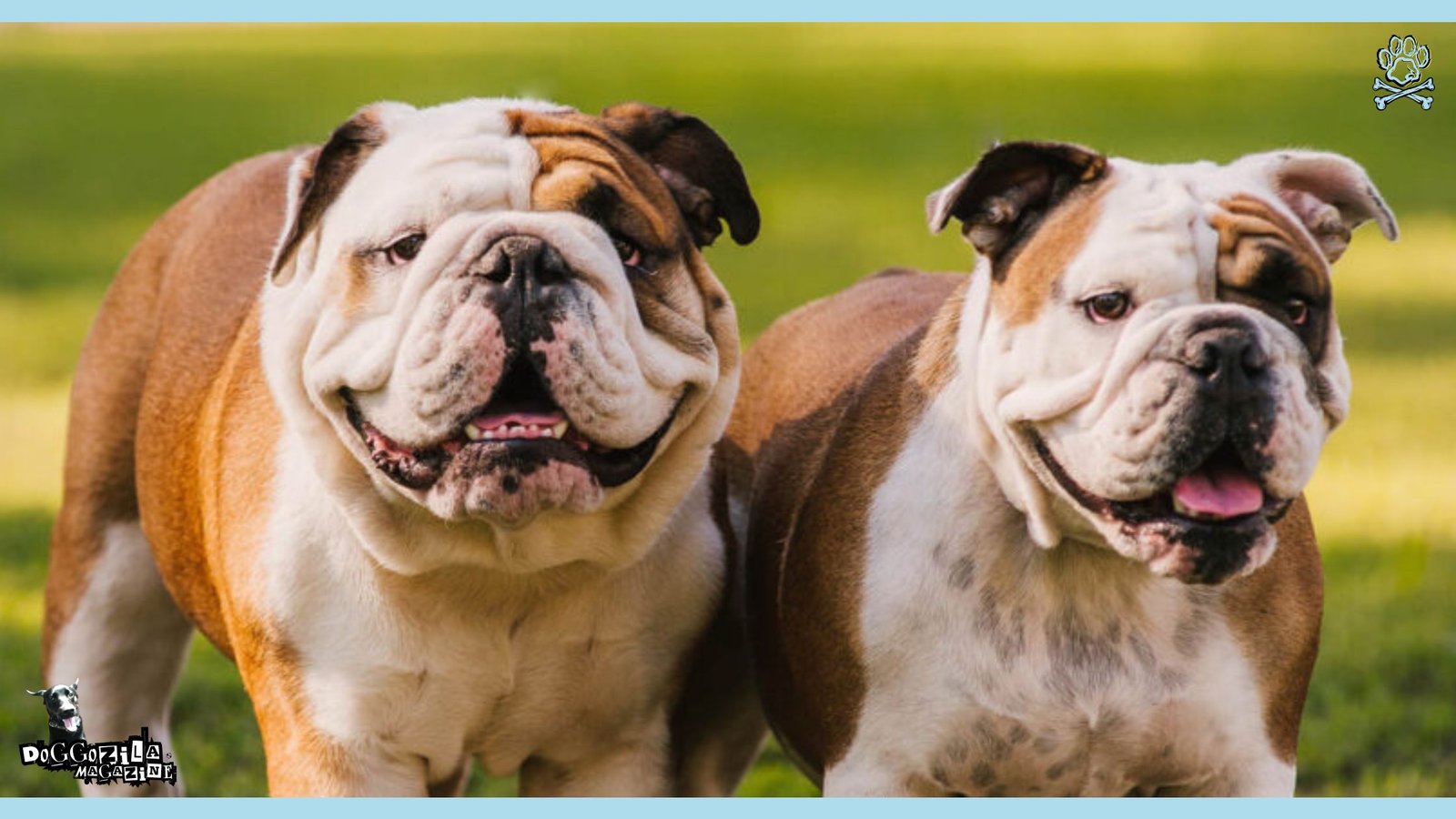
CARING FOR BRACHYCEPHALIC DOGS
Caring for brachycephalic dogs requires a nuanced understanding of their unique needs and challenges. These flat-faced breeds, characterized by their shortened snouts, are prone to respiratory issues due to the structure of their airways. Therefore, it is vital for owners to tailor their care routines to ensure optimal health and comfort.
What to Consider if Choosing Brachycephalic Dogs
One of the primary considerations for caring for brachycephalic dogs is their exercise regimen. While regular exercise is crucial for maintaining a healthy dog weight and overall fitness, these breeds often experience difficulty breathing during strenuous activities.
Consequently, owners should engage their pets in short bursts of gentle exercise rather than long sessions. Activities such as leisurely walks in cooler temperatures can be beneficial, as they encourage movement without overexertion. Always monitor their breathing and be mindful of their limits to prevent potential health complications.
Brachycephalic Dogs are Sensitive to Temperature
Temperature sensitivity is an important factor to consider. Brachycephalic dogs are especially vulnerable to heat. Their unique anatomy hampers their ability to cool themselves efficiently through panting.
Therefore, it is recommended to avoid outdoor activities during hot weather and to ensure dogs have access to cool, shaded areas indoors.
When it comes to grooming, flat-faced breeds may require regular upkeep because their skin folds can trap moisture and debris, leading to skin issues. Regular cleaning of the facial wrinkles is essential to prevent infections.
Well-Ventilated Homes and Free from Excessive Humidity
Creating a safe and comfortable environment is pivotal in managing the health of brachycephalic dogs. Owners should ensure that their living spaces are well-ventilated and free from excessive humidity.
Providing cozy resting areas with soft bedding can also promote relaxation. Keeping an eye on their overall health and behavior can help in diagnosing potential issues early, ensuring they receive prompt veterinary care when needed.
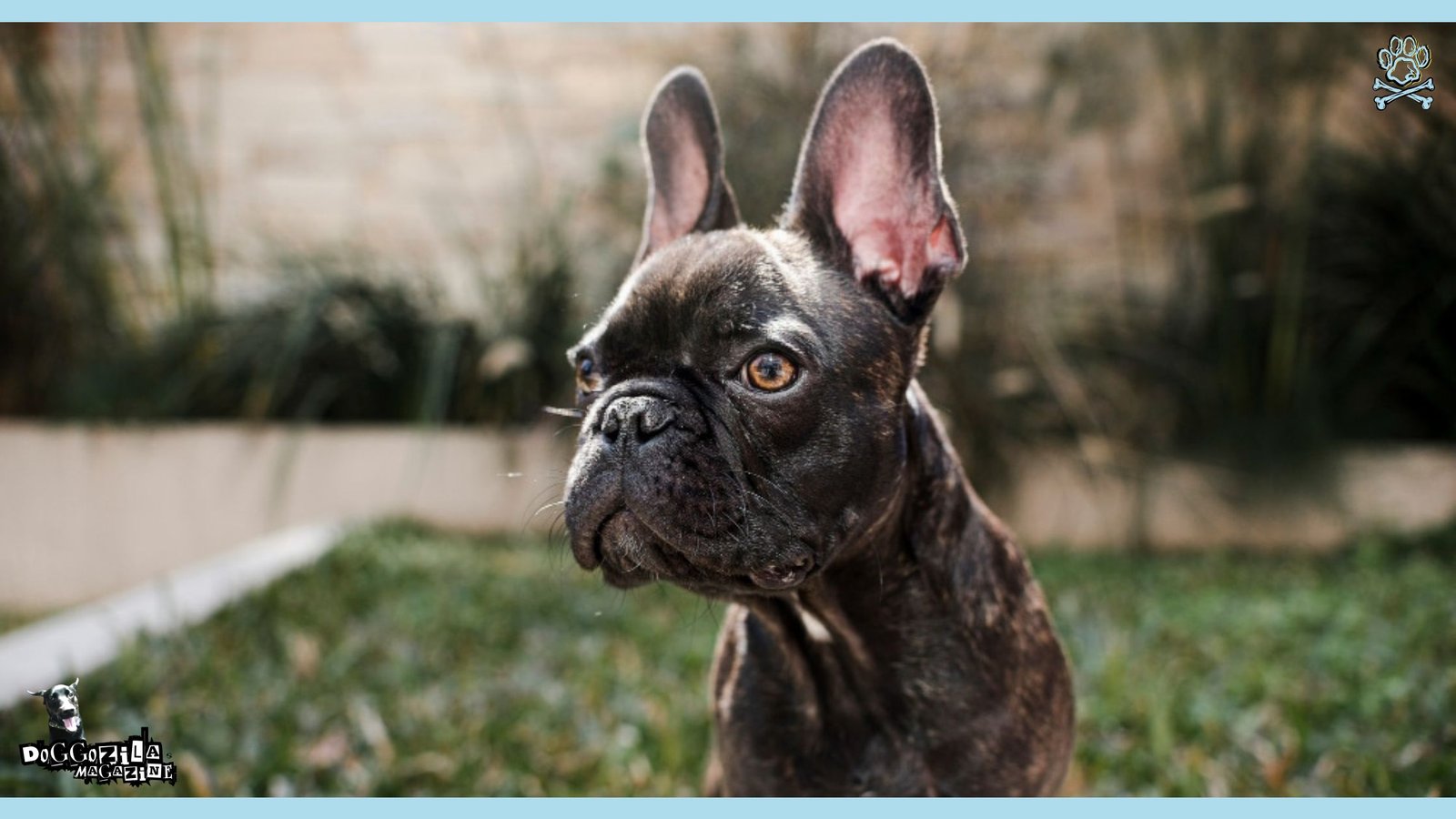
TRAINING CONSIDERATIONS FOR BRACHYCEPHALIC BREEDS
When it comes to training brachycephalic dogs, there are distinct considerations to keep in mind due to their unique anatomical structures and temperamental tendencies.
„ Breeds such as Bulldogs, Pugs, and Shih Tzus are known not only for their flat faces but also for varying degrees of intelligence and stubbornness. This variation can affect their responsiveness to training, making it crucial for owners to adopt approaches that harness their capabilities effectively. “
Avoid Intense Physical Activity
One of the primary challenges faced when training brachycephalic breeds is their susceptibility to respiratory issues, particularly during intense physical activity. As these dogs often struggle with regulating their body temperature and breathing, it is vital that training sessions remain short and focused on lower-impact exercises.
Owners should adapt their training schedules to fit the dog’s physical capabilities while still providing them with opportunities to learn new commands and tasks. Positive reinforcement is an essential strategy when training flat-faced dogs. Utilizing treats, praise, and play can significantly enhance a dog’s willingness to participate in training activities.
Brachycephalic Breeds Display Stubborn Tendencies
Brachycephalic breeds, while intelligent in their own right, may display stubborn tendencies. Hence, patience is paramount. Keeping training sessions engaging, with plenty of positive interactions, can foster a more productive bond between the dog and trainer.
Additionally, mental stimulation is as important as physical exercise for these breeds. Incorporating interactive toys, puzzle games, and scent-tracking activities can help fulfill their mental needs without over-stressing their physical limitations.
Thus, effective training for brachycephalic dogs balances their need for learning and mental workouts with the necessity of accommodating their physical restrictions. In conclusion, training these unique breeds requires a tailored approach that respects their inherent needs while promoting their overall well-being.
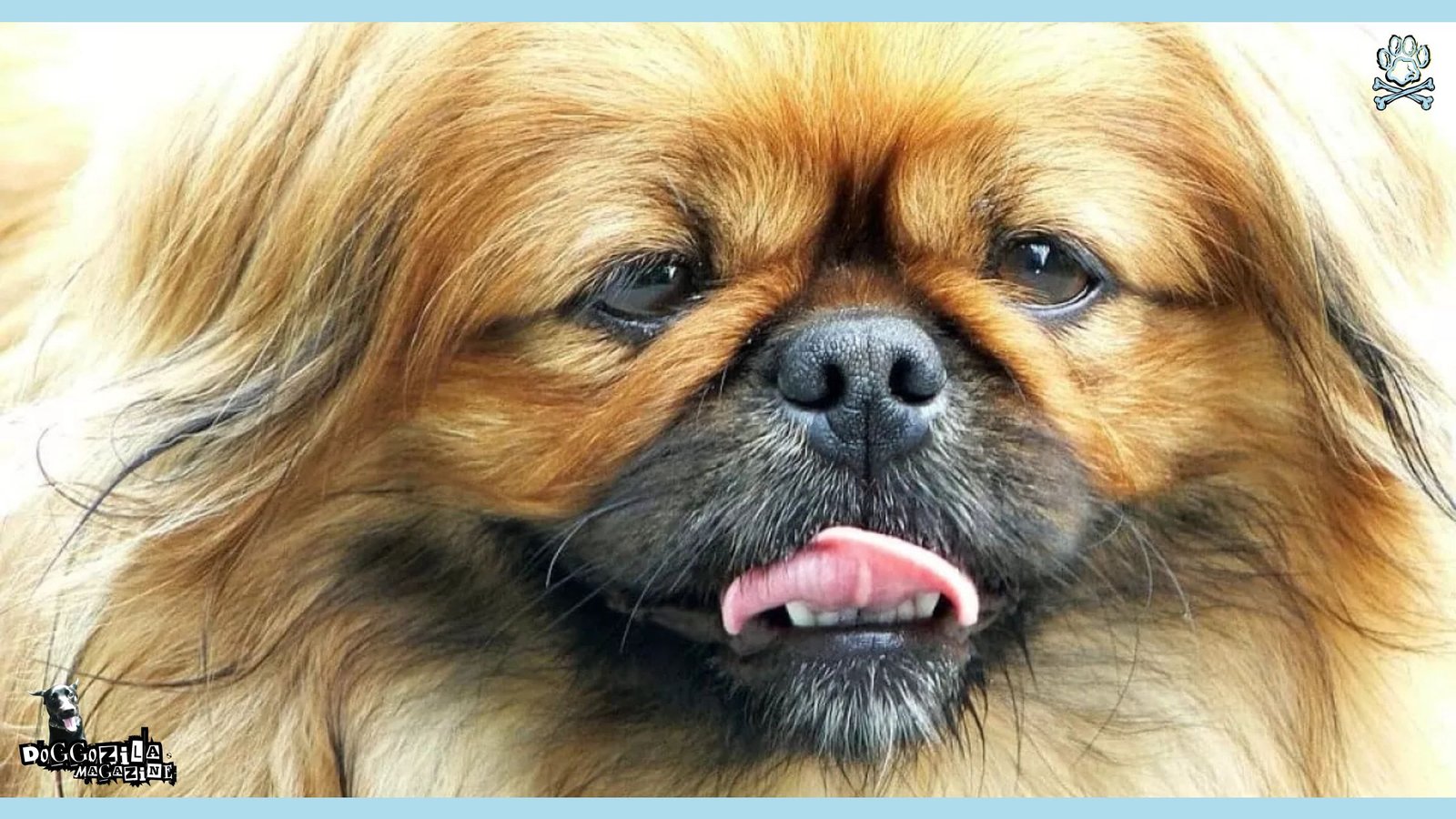
THE JOYS AND RESPONSIBILITIES OF OWNING BRACHYCEPHALIC DOGS
Owning a brachycephalic dog can be an incredibly rewarding experience, filled with companionship, love, and the unique quirks that these flat-faced breeds bring into our lives. Their affectionate nature and loyalty often create strong bonds with their owners, making every moment spent together worthwhile.
Pets With Endless Joy, Cool Antics and Endearing Personalities
We must point out that most of the brachycephalic dogs are known for their playful demeanor and can easily light up a household, offering endless joy through their antics and endearing personalities.
However, alongside these rewards, it is vital for potential owners to fully understand the specific care needs. It’s important to know the challenges associated with brachycephalic breeds.
These dogs are particularly susceptible to various health issues directly related to their unique physical structure. Common health issues are difficulty breathing, overheating, and dental problems.
As responsible pet owners, it is crucial to commit to regular veterinary check-ups. It’s important to be vigilant about recognizing any signs of dog distress or discomfort in these animals.
Dog Breeds with Certain Lifestyle
Furthermore, brachycephalic dog owners need to adopt certain lifestyle modifications to ensure the health and well-being of their pets. This includes providing a comfortable living environment. Avoiding excessive heat. Offering a balanced diet, and ensuring adequate exercise tailored to their physical capabilities.
In essence, understanding the commitments required fosters a healthier and more enjoyable relationship between owners and their pets. By embracing both the joys and responsibilities that come with owning a brachycephalic dog, individuals can create a nurturing and supportive environment for their furry companions.
Prospective pet owners should conduct thorough research and carefully consider their ability to meet these commitments before welcoming one of these charming breeds into their lives. This foresight will lead to a fulfilling companionship and a healthier, happier life for both the dog and the owner.

